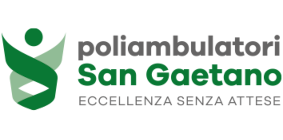Condyloma removal: what is it and how is this surgery done
At Poliambulatori San Gaetano in Vicenza area this surgery can be performed privately with no waiting list.
What are condylomata acuminata?
Condylomata acuminata are caused by human papillomavirus (HPV), a very common viral infection that is transmitted through sexual intercourse. There are different types of papillomavirus: some cause condylomata acuminata, others cause warts on the hands or feet, others can cause genital, anal, or oral cancers.
How do they present?
Condylomas usually present as small whitish polyps of varying size, distributed on the skin and/or mucosa, and usually appear 2-3 months after intercourse with an infected person, sometimes as late as 6 or 12 months.
In men they form on the glans, balano-preputial groove, urethral meatus, and along the frenulum and shaft of the penis. In women they frequently affect the vulva, the lower third of the vagina, and the cervix; condylomata in the perivulvar and perianal regions are also common.
What are the main symptoms?
The most common symptom is the appearance of one or more bumps in the infected area. They may be a few millimeters or even a few centimeters in size, flat or raised, single or numerous, pinkish in color or whitish. They can cause itching, burning, pain or bleeding.
How is the diagnosis made?
By specialist evaluation, condylomata are easy to detect based on their clinical appearance; they can be distinguished from similar lesions, such as small fat glands or nonviral papillae. In special cases, histological examination is advisable.
It is important to do investigations (blood tests and culture tests) to exclude the simultaneous presence of other infections that can be transmitted through sexual intercourse (gonorrhea, chlamydia, mycoplasmas, HIV, syphilis).
What is the most indicated treatment?
Condylomas, except in some cases, do not heal spontaneously, and there are many therapies. There are several methods to remove condylomas. These include:
- Antiviral gels or creams are recommended for perianal condylomas;
- Chemical substances (trichloroacetic acid and podophyllin);
- CO2 laser or cryotherapy.
For complete healing, it is important that the partner is also seen by the specialist and treated if necessary. If drug therapies are ineffective, condylomas can develop into more severe forms and spread to areas of skin in the anus, perianal region, and entire anal canal. This will require more invasive techniques. In these cases, condylomas must be surgically removed.
What does condyloma excision surgery consist of?
The surgical procedure aims to remove condylomatous formations with special attention to their complete excision. The surgery is performed on an outpatient basis and with local anesthesia in the affected area.
Depending on the number of condylomata removed, postoperative pain may vary. Patients usually resume work activities after a few days, although they must perform dressings daily. It should be noted that condylomas tend to recur within the first 3 months after completion of treatment and that some viral subtypes possess the potential for neoplastic transformation. To this end, it is wise for the patient to undergo periodic checkups after 1, 3, 6, and 12 months after surgery.
An outpatient Urology clinic is available at Poliambulatori San Gaetano. All Genital Condyloma Excision surgeries are performed on an outpatient basis and can be booked every week with reduced waiting list.
Poliambulatori San Gaetano is in Thiene and Schio, Vicenza.
The dedicated English-language answering service is available by calling or texting +393296253353 for information or reservation.



